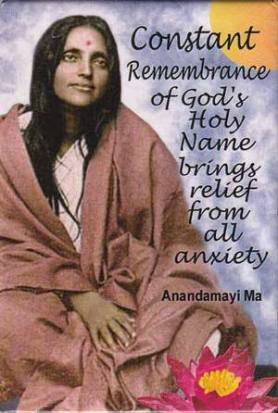Tag Archives: Goddess
Shiva and Shakti-Jnaneshwar
Here are some selected verses from Jnaneshwar, a 13th century Indian mystic.
Amritanubhav (The Nectar of Mystical Experience)
Chapter One: The Union of Shiva and Shakti
I offer obeisance to the God and Goddess,
The limitless primal parents of the universe.
They are not entirely the same,
Nor are they not the same.
We cannot say exactly what they are.
How sweet is their union!
The whole world is too small to contain them,
Yet they live happily in the smallest particle.
When He awakes, the whole house disappears,
And nothing at all is left.
Two lutes: one note.
Two flowers: one fragrance.
Two lamps: one light.
Two lips: one word.
Two eyes: one sight.
These two: one universe.
In unity there is little to behold;
So She, the mother of abundance,
Brought forth the world as play.
He takes the role of Witness
Out of love of watching Her.
But when Her appearance is withdrawn,
The role of Witness is abandoned as well.
Through Her,
He assumes the form of the universe;
Without Her,
He is left naked.
If night and day were to approach the Sun,
Both would disappear.
In the same way, their duality would vanish
If their essential Unity were seen.
The book from which these excerpts are taken, is entitled
“Jnaneshvar: The Life and Works of the Celebrated Thirteenth Century Indian Mystic-Poet.”
The translation is by Swami Abhyayananda.
Shakti, Power And Femininity In Indian Art: By Nitin Kumar

Long ago, there reigned a mighty king named Ila. Once while hunting, he came upon a grove where Shiva was making love with Parvati, and surprise of surprises, Shiva had taken the form of a woman to please her. Everything in the woods, even the trees had become female, and as he approached even King Ila himself was transformed into a woman! Shiva laughed out aloud and told him to ask for any boon except that of masculinity.
Thus says the Shaktisangama Tantra:
Spiritual Practice, Kundalini, and Self-Realization: By Harsha (Harsh K. Luthar, Ph.D.)
Shakti: Power of the Goddess: By Dr. Harsh K. Luthar
Gopi Krishna’s emphasis on Kundalini as a biological evolutionary force is a very limited view of the great Shakti.
Shakti is the fundamental Spiritual Principle and Force which has physical, mental, and psychic manifestations. These manifestations cannot indicate or capture the depth of this Great Power. Its ultimate nature is only realized when the Shakti completes its Journey to the end and reveals the deepest mystery of existence and the Self is Recognized.
Yes, the Shakti is Maha Sarswati, the Goddess of Wisdom. She makes one a poet, a scholar, and an orator. She bestows high intelligence. She is the teacher in both the earthly and subtle psychic realms.




You must be logged in to post a comment.